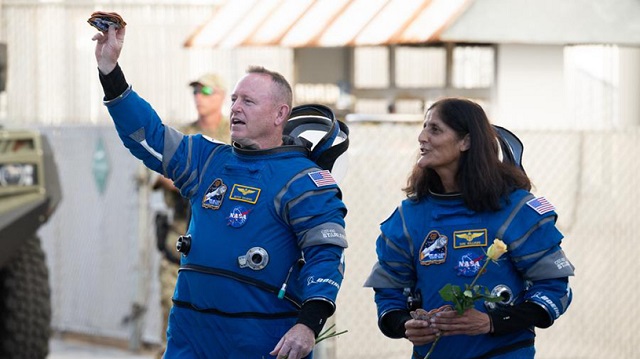
LOS ANGELES, the United States | Xinhua | Two U.S. National Aeronautics and Space Administration (NASA) astronauts find themselves on an unexpectedly extended mission aboard the International Space Station (ISS) as technical issues plague their return spacecraft, Boeing’s Starliner.
The intended short test mission has stretched beyond 60 days, with no definite return date in prospect.
During a press conference on Wednesday, Ken Bowersox, associate administrator for NASA’s Space Operations Mission Directorate, said that “we could take either path,” either returning the astronauts on Starliner or seeking an alternative method of using SpaceX.
On June 5, astronauts Butch Wilmore and Sunita Williams were launched to the ISS as part of Starliner’s first crewed test flight, and multiple technical problems have since occurred.
The issues plaguing Starliner include failures in the reaction control system (RCS) thrusters, which are crucial for the spacecraft’s maneuverability and safe return to Earth, and helium leaks in the propulsion system. These problems have raised concerns about the capsule’s safety and reliability.
The space agency is seriously considering a backup plan involving a SpaceX Crew Dragon capsule to bring the two back to Earth. This contingency could extend their stay in space to approximately eight months, with a potential return date around February 2025, according to Wednesday’s briefing.
Steve Stich, manager of NASA’s commercial crew program, revealed that planning for this backup option began last month. “We started in early July, doing some early planning with SpaceX for some of these contingencies,” Stich explained. “Then, as we got closer and got a little bit more data, we started to put a few more things in place.”
The Starliner issues have broader implications for NASA’s commercial crew program. The agency has long emphasized the importance of having multiple providers for crew transportation to ensure redundancy and continuous access to the ISS. SpaceX has been successfully ferrying astronauts to and from the station since 2020, while Boeing has faced repeated setbacks and delays with its Starliner program.
These latest complications have resulted in additional financial strain for Boeing. The company has recently announced a 125-million-U.S.-dollar write-off related to unplanned costs for the Starliner program, adding to 1.5 billion dollars in previous write-offs.
NASA has pushed back the launch of the next SpaceX Crew Dragon mission, originally scheduled for Aug. 18, to no earlier than Sept. 24. This delay provides additional time for decision-making regarding Starliner and potential crew adjustments.
If implemented, the contingency plan would involve sending only two astronauts instead of the usual four on the next SpaceX Crew Dragon flight. Wilmore and Williams would join the space station crew as full-fledged members for a six-month stay and return on the Crew Dragon around February 2025.
During their extended stay, Wilmore and Williams have been fully integrated into the ISS crew, participating in various scientific experiments and maintenance tasks.
Their activities include conducting ultrasound scans to study how space affects human veins, working on manufacturing higher-quality optical fibers in microgravity experiments, and participating in fluid physics studies to understand how to manage liquids without gravity.
Additionally, they have been involved in routine maintenance tasks, including some less glamorous chores like toilet maintenance. They also had to take emergency precautions when a defunct Russian satellite broke apart near the ISS, forcing them to prepare for a potential evacuation.
A final decision on whether to proceed with the Starliner return or switch to the SpaceX backup plan is expected by mid-August. Until then, Wilmore and Williams will continue their extended stay aboard the ISS. ■
 The Independent Uganda: You get the Truth we Pay the Price
The Independent Uganda: You get the Truth we Pay the Price



